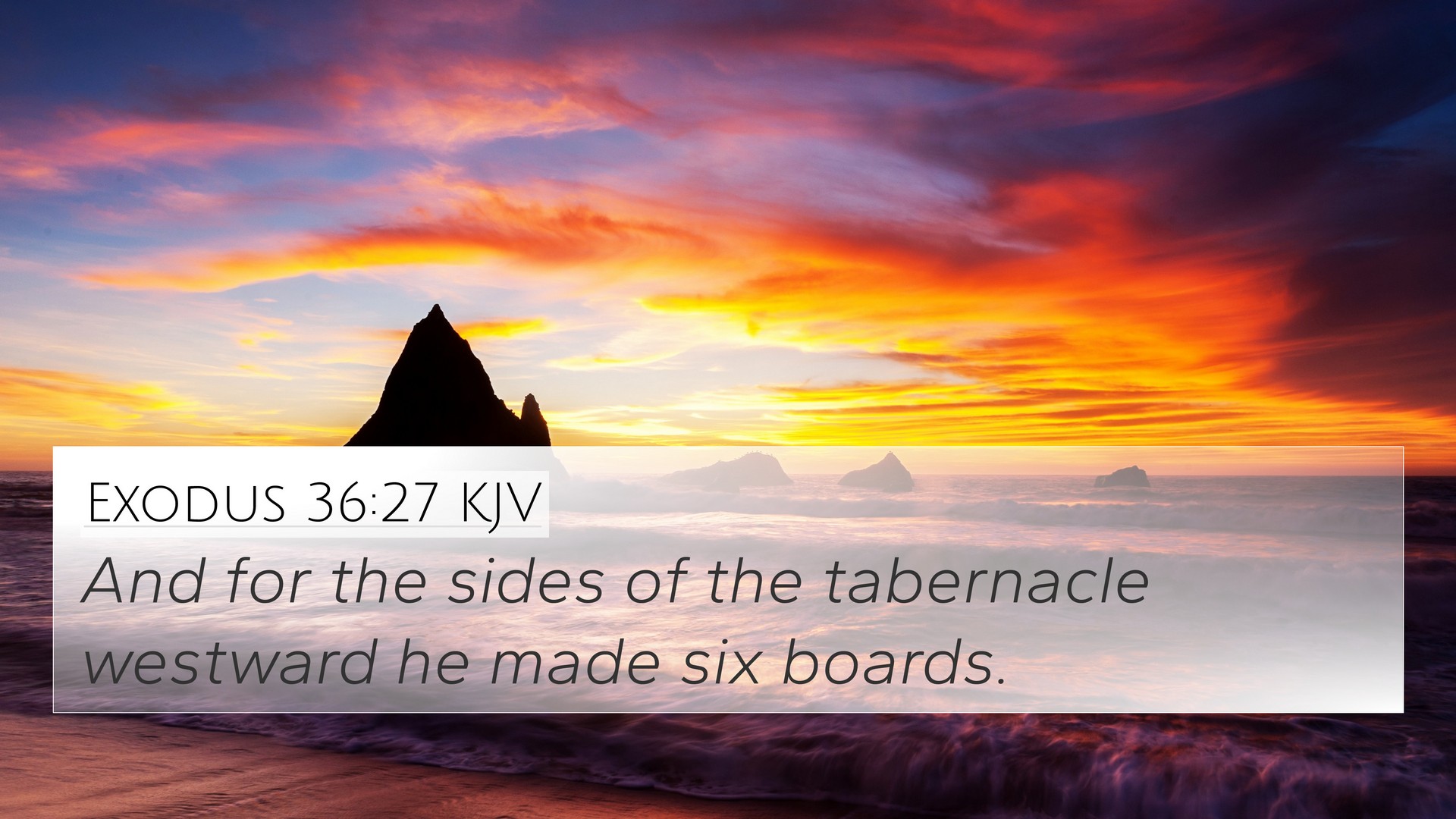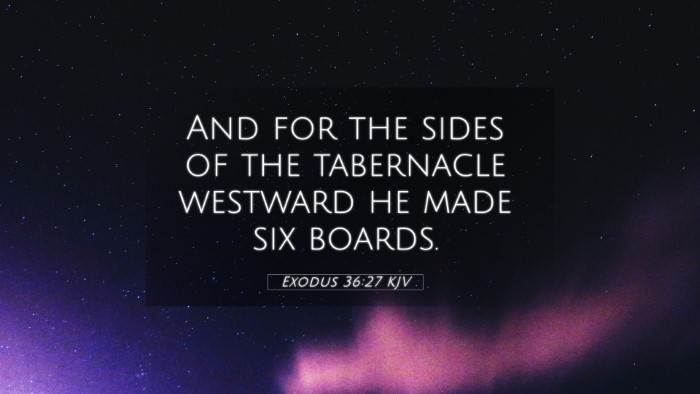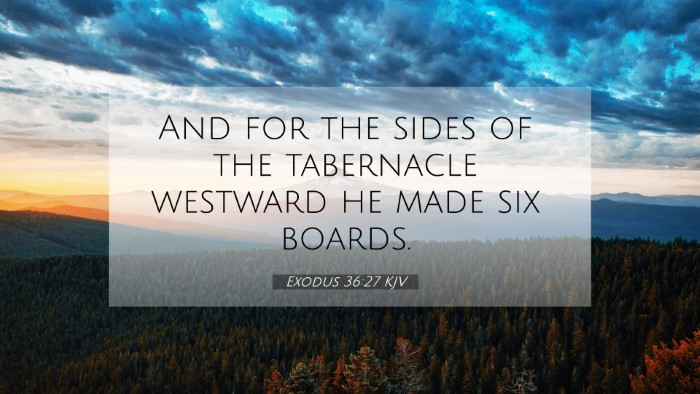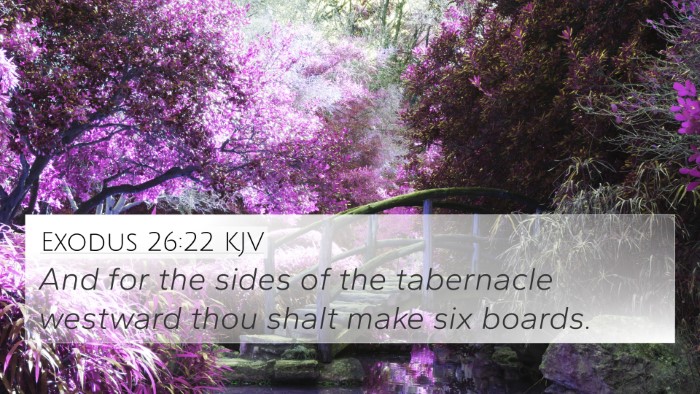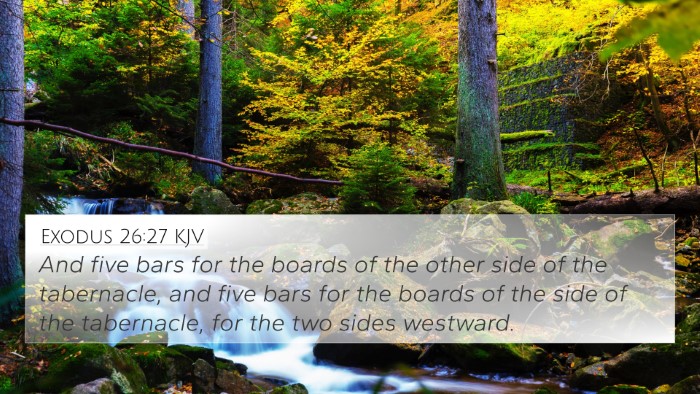Exodus 36:27: A Comprehensive Analysis
Verse: "And for the other side of the tabernacle, which is toward the north corner, he made six boards," (Exodus 36:27, KJV)
Understanding Exodus 36:27
This verse is part of a detailed account of the construction of the tabernacle, highlighting the specific materials and methods used in its creation. The tabernacle served as a portable dwelling place for God among the Israelites during their journey through the wilderness.
Commentary Insights
- Matthew Henry: Henry emphasizes that this verse signifies the order and organization in God's dwelling, which reflects His nature. The precise details in the construction are not mere technicalities; they serve to teach us about God's holiness and the importance of worship.
- Albert Barnes: Barnes notes that the mention of the boards for the tabernacle symbolizes the support required for God's presence among His people. It reminds believers that a solid structure is essential for a faithful community.
- Adam Clarke: Clarke elaborates on the significance of the north corner, suggesting that it represents the place of strength. He connects this structural aspect with the idea that God's presence strengthens and supports His people through life's challenges.
Key Themes and Connections
Exodus 36:27 invites reflection on several key themes within the broader narrative of the Bible:
- Divine Presence: The tabernacle is a symbol of God's desire to dwell among His people (Exodus 25:8), which connects to the New Testament's fulfillment of God dwelling among humanity through Christ (John 1:14).
- Structure and Order: This verse reflects the importance of order in worship and community, a theme echoed throughout the epistles (1 Corinthians 14:40).
- God's Holiness: The detailed prescriptions for the tabernacle signify the holiness of God and the reverence required in His worship (Leviticus 10:3).
Bible Cross-References
Exodus 36:27 is enriched by the following cross-references:
- Exodus 25:8: God commands that a sanctuary be built for His presence.
- Numbers 24:5: A reference to the beauty and order of God's people.
- 1 Corinthians 3:16–17: Believers themselves are called the temple of God.
- Hebrews 9:1: Discusses the first covenant having regulations for worship.
- Matthew 5:14: Believers as a light set on a hill, paralleling the tabernacle's role.
- Revelation 21:3: The ultimate realization of God dwelling with His people.
- Psalm 84:1: A reflection on the loveliness of God’s dwelling place.
Inter-Biblical Reflections
Connecting the Old Testament narrative with the New Testament revelations showcases the continuity of God's plan:
- Looking at the Old and New Testament connections highlights how the physical tabernacle points to a spiritual reality fulfilled in Christ (John 2:19).
- Exploring the theme of God's presence from the physical structure of the tabernacle to the spiritual establishment of the Church provides profound insights into God’s ongoing work among His people.
Resources for Further Study
To deepen your understanding of Exodus 36:27 and related themes, consider utilizing these tools:
- Bible concordance for tracing themes and references.
- Cross-reference Bible study guides for exploring connections.
- Bible reference resources such as commentaries, lexicons, and study Bibles.
Conclusion
Exodus 36:27 not only provides insight into the construction of the tabernacle but also invites believers to reflect on the themes of divine presence, worship, and the holistic structure of God’s relationship with His people. The connections drawn from this verse resonate throughout Scripture, revealing the depth and continuity of God’s covenantal relationship with humanity.
Keywords Summary
This exploration provides numerous Bible verse cross-references, showcasing the connections between Bible verses and the linking of Bible scriptures that enrich our understanding of themes within the Bible. It serves as a guide for those seeking to understand Bible verses that relate to each other, along with methods for cross-referencing Bible study.
